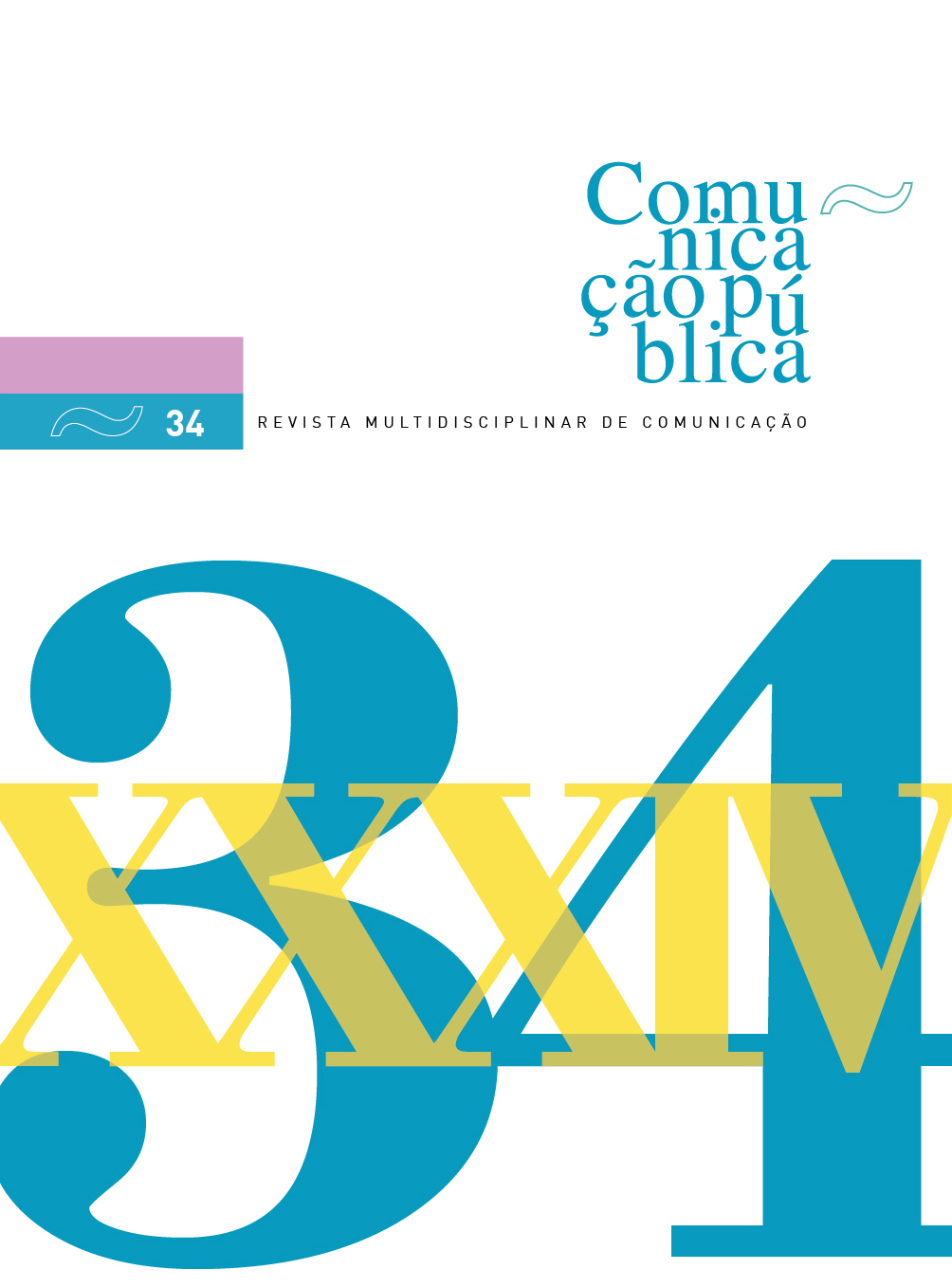Comparando o impacto do tamanho do ecrã na perceção dos alunos
um estudo de salas de cinema vs. outros ecrãs pessoais
DOI:
https://doi.org/10.34629/cpublica.732Palavras-chave:
reacção do público, ecrãs, filmes, alunos, percepçãoResumo
O presente estudo centra-se na utilização de filmes em âmbito educativo, explorando as potenciais diferenças de impacto entre ver filmes numa sala de cinema convencional e em ecrãs pessoais como PCs, tablets ou smartphones. Baseia-se em dados empíricos, envolvendo pesquisa de campo com alunos (N = 324) de idades compreendidas entre os 12 e os 18 anos. Foram utilizados questionários online, acessíveis através de códigos QR, para recolher os dados no final das sessões de visionamento dos filmes. Os resultados indicam que a experiência de visualização em sala de cinema provoca um nível de impacto mais elevado e aumenta a predisposição para o envolvimento com os conteúdos traduzido em comentários mais extensos e aprofundados no âmbito da pesquisa de campo. Além disso, constata-se que os alunos que assistiram aos filmes através de ecrãs pessoais atribuíram menor importância aos aspetos visuais, designadamente ao tamanho e resolução do ecrã, sendo um possível indicador de menor atenção e foco no que está a ser apresentado. Acima de tudo, este estudo demonstra a importância de criar um ambiente semelhante ao das salas de cinema em contextos educativos para proporcionar aos alunos uma experiência audiovisual mais intensa e eficaz.
Downloads
Referências
Appel, M., & Mengelkamp, C. (2022). Watching videos on a smartphone: Do small screens impair narrative transportation? Media Psychology, 25(5), 653-674. https://doi.org/10.1080/15213269.2021.2025109.
Baranowski, A. M., & Hecht, H. (2014). The big picture: Effects of surround on immersion and size perception. Perception, 43(10), 1061-1070. https://doi.org/10.1068/p7663.
Bellour, R., Radner, H., & Fox, A. (2018). Raymond Bellour: Cinema and the moving image. Edinburgh University Press. http://www.jstor.org/stable/10.3366/j.ctv7n08qk.
Beugnet, M. (2014). Miniature pleasures: On watching films on an iPhone. In J. Geiger, & K. Littau (Eds.), Cinematicity in media history (pp. 196-210). Edinburgh University Press.
Beugnet, M., & Oever, A. van den. (2018). Gulliver goes to the movies: Screen size, scale, and experiential impact – A dialogue. In Screens (pp. 247-257). Amsterdam University Press. https://doi.org/10.1515/9789048531691-021.
Bracken, C. C., & Pettey, G. (2007). It is REALLY a smaller (and smaller) world: Presence and small screens. Presence 2007: The 10th Annual International Workshop on Presence, 283-290.
Brown, T. (2011). Using film in teaching and learning about changing societies. International Journal of Lifelong Education, 30(2), 233-247. https://doi.org/10.1080/02601370.2010.547615.
Chion, M. (1994). Audio-Vision: Sound on screen. Columbia University Press.
Couldry, N. (2019). Media: Why it matters. Polity Press.
Dunaway, J., & Soroka, S. (2019). Smartphone-size screens constrain cognitive access to video news stories. Information, Communication & Society. https://doi.org/10.1080/1369118X.2019.1631367.
Governo dos Açores. (2021). Estatísticas da educação 2020/2021. https://portal.azores.gov.pt/web/sreac/estatísticas.
Gunter, B. (2000). Media research methods: Measuring audiences, reactions and impact. Sage Publications. https://doi.org/10.4135/9780857028983.
Kim, K. J., & Sundar, S. S. (2016). Mobile persuasion: Can screen size and presentation mode make a difference to trust? Human Communication Research, 42(1), 45-70. https://doi.org/10.1111/HCRE.12064.
Martinelli, D. (2020). What you see is what you hear. Springer International Publishing. https://doi.org/https://doi.org/10.1007/978-3-030-32594-7.
Odin, R. (2018). The concept of the mental screen: The internalized screen, the dream screen, and the constructed screen. In D. Chateau, & J. Moure (Eds.), Screens (pp. 176-185). https://doi.org/10.1515/9789048531691-016.
Park, H., & Cho, H. (2021). Effects of nursing education using films on perception of nursing, satisfaction with major, and professional nursing values. Journal of Nursing Research, 29(3). https://doi.org/10.1097/JNR.0000000000000433.
Petkari, E. (2017). Building beautiful minds: Teaching through movies to tackle stigma in psychology students in the UAE. Academic Psychiatry, 41(6), 724-732. https://doi.org/10.1007/s40596-017-0723-3.
Rao, A., & Hartmann, W. R. (2015). Quality vs. variety: Trading larger screens for more shows in the era of digital cinema. Quantitative Marketing and Economics, 13(2), 117-134. https://doi.org/10.1007/s11129-015-9156-z.
Reeves, B., Lang, A., Kim, E. Y., & Tatar, D. (2009). The effects of screen size and message content on attention and arousal. Media Psychology, 1(1), 49-67. https://doi.org/10.1207/S1532785XMEP0101_4.
Rigby, J. M., Gould, S. J. J., Brumby, D. P., & Cox, A. L. (2016). Watching movies on netflix: Investigating the effect of screen size on viewer immersion. Proceedings of the 18th International Conference on Human-Computer Interaction with Mobile Devices and Services Adjunct, MobileHCI 2016, 714-721. https://doi.org/10.1145/2957265.2961843.
Szita, K. (2019a). Smartphone cinematics: A cognitive study of smartphone spectatorship. University of Gothenburg. http://www.tara.tcd.ie/handle/2262/99565.
Szita, K. (2019b). Watching films on a small screen has an impact on comprehension and immersion. University of Gothenburg. https://www.gu.se/en/news/watching-films-on-a-small-screen-has-an-impact-on-comprehension-and-immersion.
Szita, K., & Rooney, B. (2021). The effects of smartphone spectatorship on attention, arousal, engagement, and comprehension. I-Perception, 12(1). https://doi.org/10.1177/2041669521993140.
Tan, E. S. (2013). Emotion and the structure of narrative film: Film as an emotion machine. In Emotion and the Structure of Narrative Film. Routledge. https://doi.org/10.4324/9780203812761.
Troscianko, T., Meese, T. S., & Hinde, S. (2012). Perception while watching movies: Effects of physical screen size and scene type. I-Perception, 3(7), 414-425. https://doi.org/10.1068/i0475aap.
Van Der Sluis, F., Van Den Broek, E. L., Van Drunen, A., & Beerends, J. G. (2018). Mobile screen size limits multimodal synergy. ACM International Conference Proceeding Series. https://doi.org/10.1145/3232078.3232101.
Downloads
Publicado
Edição
Secção
Licença
Direitos de Autor (c) 2023 Copyright (c) 2023 Author

Este trabalho encontra-se publicado com a Licença Internacional Creative Commons Atribuição-NãoComercial 4.0.
Os conteúdos da Comunicação Pública estão licenciados com uma licença Creative Commons - Atribuição-NãoComercial 4.0 Internacional.




